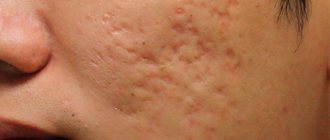Red whites of the eyes are a sign of vasodilatation or hemorrhage. It may be temporary and go away on its own. Or it can become a constant problem, accompanied by unpleasant sensations. It festers, itches, waters, hurts, and swells.
People do not take the causes of illness seriously. They find trivial excuses for the problem. And the redness of the protein, meanwhile, manifests itself in the form of thickened, enlarged blood vessels.
What to do - cope with the disease yourself or immediately go to a specialist. Let's figure it out: why the malaise occurs, why the eyes turn red, how to eliminate the consequences.
Why do my eyes turn red?
The color of the eyes changes due to the strong expansion of the veins and capillaries that supply the eyeball with blood. Due to the increase in lumen, the vessels become significantly thinner and become transparent - red blood becomes visible. Taking into account the degree to which and exactly where the blood vessels have dilated, the redness affects the entire sclera or only its corners, moves to the eyelid or is localized only on the eyeball.
Red whites of the eyes - what to do
The problem arises due to a sharp change in the physiological movement of blood towards increasing intensity . There are several reasons for this state of the body, they can be both external and internal.
Red blood vessels on the whites of the eyes
Environmental factors
The eyes can be severely irritated by various chemical compounds. Increased blood flow tries to quickly remove toxic substances from the surface of the eyeball; the body’s reaction is instinctive and is not subject to external correction. Another large group of external factors is mechanical damage to the membrane of the eyeball. These can be either small solid particles that create shallow scratches on the surface, or strong impact loads that lead to mechanical destruction of some vessels. After eliminating the irritating factor of the external causes, the redness disappears without the need for treatment. But this does not apply to severe chemical burns or mechanical damage to the organs of vision. A separate group of physiological reasons is visual fatigue after prolonged work with a computer . Redness occurs in electric welders due to irradiation of the eyeball with hard ultraviolet rays. The listed external causes can cause redness of varying intensity. Many of them disappear within a few hours, while others require several days and special medications.
Causes of dry eye syndrome
Important. If the redness of the eyes does not go away after the factors that provoke it disappear, you need to go to an ophthalmologist. This situation can be caused by complex eye damage and cause partial loss of vision.
You need to especially carefully monitor the behavior of your eyes after severe mechanical injuries. They violate the integrity of the conjunctiva and cornea, the eyes swell, and the risk of various pathogenic microorganisms penetrating through the damaged tissue into the eyeball increases.
Types of conjunctivitis
Physiological reasons
Inappropriate reactions of the body to various allergens, increased blood pressure, deviations from normal blood clotting parameters, etc. Redness is a consequence of prolonged muscle strain. Most of these rednesses do not require treatment; eliminating the physiological causes automatically eliminates the symptoms.
What to do if the eyes are red without injury and there are no inflammatory processes? You should contact your healthcare facility for advice. After an examination, an experienced ophthalmologist should send the patient to a doctor of appropriate specialization, and not treat redness.
How does a specialist appointment work?
Important. You need to understand that physiological reasons also include overwork, mental stress, and irritation from lenses. In children, redness appears after prolonged crying.
If microtraumas of the ocular surface occur (cornea trauma when putting on a contact lens, damaged lens, accumulation of protein deposits on the lens), which are accompanied only
feeling that something has got into the eye, you should not neglect treatment, since the lack of treatment for microtraumas can lead to irritation and redness, which in turn can contribute to the development of complications (keratitis, keratoconjunctivitis, corneal ulcers), since damaged tissues are a gateway to infection .
For the restoration of eye tissue, medications containing dexpanthenol, a substance with a regenerating effect, have proven themselves to be effective. In particular, the eye gel “Korneregel” has a healing effect due to the maximum concentration of dexpanthenol 5%*, and the carbomer included in its composition, due to its viscous texture, prolongs the contact of dexpanthenol with the ocular surface.
What diseases cause red eyes?
- Low blood clotting or hypertension . Both factors cause minor bleeding; blood enters the space of the eyeball and changes its color.
- Arthritis, spondyloarthritis, relapsing polychondritis . In the early stages, redness does not appear; problems are noticeable in the chronic course of the disease.
- Granuliatosis, Sjögren's syndrome . Redness occurs not only in the eyes; other areas of the skin and mucous membranes also change color.
Symptoms of Sjögren's syndrome
Diabetes mellitus and overdose of medications, including eye medications, can be another cause of redness.
Red whites of the eyes - what to do
On the surface of the eyeball there are small blood vessels, the enlargement of which leads to redness of the eyes. This is due to external irritants or diseases, since capillaries are practically invisible in their normal state. Dilated vessels make the white of the eye red, and bloody spots are visible in the sclera area.
This gives the face a sickly appearance. Many people think that their blood vessels have “burst”. In fact, for blood vessels to “burst”, very serious reasons are needed. Vessels burst quite rarely.
The whites of the eyes may turn red due to some kind of injury, illness, overwork, or taking medications. Chronic nature indicates a reaction to contact lenses, allergies, infections. Redness of the eyes in this case requires the help of an ophthalmologist; self-medication is not allowed.
Heavy physical exertion and prolonged and intense coughing often lead to minor hemorrhages. If there is no pain, there is no need to worry. After a couple of weeks, the redness will go away on its own.
Eye changes
Some cases that require surgical treatment are redness due to glaucoma, dacryocystitis, inflammation of the membrane, etc. If the cause of red eyes is a vision disorder, redness is treated simultaneously with the underlying disease and very rarely goes away on its own. All pathologies that cause redness are divided into two large groups.
Development of glaucoma - optic nerve atrophy
Video: How to treat eye inflammation?
First aid for pain and redness in the eye
A common cause of redness of the mucous membrane is lack of sleep and overwork. To solve the problem you just need to get a good night's sleep and rest. In addition, you can rinse your vision with special drops or freshly brewed tea or chamomile.
In some cases, the cause of inflammation and the sensation as if blood vessels have burst are superficial injuries to the eye that occur when a foreign body penetrates them or is injured by some object.
If unpleasant symptoms appear as a result of an injury to the organ of vision, you should:
- Remove any object that has gotten into your eyes as quickly as possible;
- It is forbidden to rub your eyelids, as this further increases the damage;
- use a thick cotton swab to remove the foreign body from the eye;
- drip 2-3 drops of a 30% sulfacetamide solution into the eyes.
It is strictly forbidden to independently remove foreign bodies that are located on the cornea of the organ of vision, covering the iris and pupil.
What pathologies cause inflammation?
- Common chickenpox . Due to active smallpox, the cornea becomes inflamed, after which viruses can penetrate into the eye chambers.
- Dacryocystitis, chronic dacryoadenitis or acute canaliculitis . The sac, gland or tear duct becomes inflamed.
- Stye, inflammation of the eyelids, creatitis, chorioretinal inflammation.
- Abscesses on the bones and soft tissues of the orbit.
Barley is an infectious eye disease with an acute inflammatory process.
This is a list of the most common diseases that cause red eyes. There are others, but they are rare. Due to the fact that redness indicates complex eye diseases, medical attention is necessary. Especially if nausea is observed, there is a headache, visual acuity decreases, or fluid of any kind is released from the eyes. The sooner treatment is carried out, the lower the risk of consequences.
What to do if one eye is red
The causes of redness in one eye are similar to those that cause redness in both. This can be either physical damage or pathology. If the cause is a foreign body, then the problem of redness can be solved by generously rinsing the eye with saline solution or clean water.
Damage may occur due to foreign body entry:
- Grains of sand;
- Cilia;
- Cosmetics;
- Household chemicals;
- Midges;
- Dust.
Upon contact, the level of tear fluid increases. This interferes with the clarity of vision. You need to have someone examine the eye and then carefully remove the foreign object. If the sensation of a foreign object persists, the eye continues to hurt, but the examination does not reveal a problem, you should immediately consult a doctor. Otherwise, there is a risk of losing your vision.
It is best to use chamomile infusion as a medicinal solution. It will relieve inflammation and pain.
If redness persists for a long time, you should consult an ophthalmologist for examination. The doctor will determine the root cause of the redness and prescribe the appropriate treatment.
Redness of the eyes due to inflammation of the cornea
The most common cause, if not treated promptly, can lead to long-term vision impairment. Inflammation of the cornea (keratitis) is caused by mechanical and chemical damage, infection with viruses and bacteria.
- Fungal keratitis. Fungal bacteria enter the cornea through mechanical microdamages or when the rules for using contact lenses are violated, after mechanical irritants. When contacted with nutritious soil, fungi actively multiply; untimely treatment can lead to complete loss of vision, and often a thorn appears on the eyeball. The eyes turn red over the entire area of the cornea, the disease requires special drug treatment.
Types of eye keratitis
- Viral keratitis . Most often the disease is caused by the herpes virus. It is present in the body of most people; the impetus for increased reproduction is a significant decrease in immunity after complex diseases or weakening of the body by chronic diseases. Viral keratitis can be superficial or deep. Superficial can be treated without major problems; medicine has very effective drugs. Deep keratitis forms ulcers, and a cataract may appear. Its treatment requires a lot of time; during therapy, the doctor changes medications taking into account the dynamics of the patient’s condition.
- Ochnocerciasis keratitis . The disease occurs as a result of various allergic reactions; improper treatment can cause complete loss of vision.
- Creeping ulcer of corneal tissue . The disease is caused by streptococci, pneumococci and other pathogenic microorganisms. A specific diagnosis can only be made by a doctor after special laboratory tests. In addition to severe local redness, increased lacrimation and photophobia appear. A cloudy liquid with an unpleasant odor is intensely released from the eyes. Treatment should only be done under medical supervision.
Creeping corneal ulcer
You cannot stop instillation after the disappearance of the first signs of the disease and redness of the eyes - a relapse will certainly follow. The eye treatment process can take several months, and you need to be constantly monitored by an ophthalmologist.
Video: Red Eye Syndrome
Red eyes and pain - reasons
The main causes of redness with pain include the following:
- Chronic lack of sleep.
- Fatigue.
- Problems with the amount of tear fluid that wets the eye.
- Reaction to medications.
- Irritation due to chemical or physical burns or damage.
- Allergic reaction.
- Conjunctivitis.
- Inflammation of the edge of the eyelid.
- Hypertonic disease.
Possible causes may be poor contact lens technology or redness due to impact. To accurately determine the cause, the ophthalmologist needs to determine the presence of additional symptoms. Without medical attention, glaucoma and cataracts can develop.
The inflammatory process will be characterized by pain, dryness, and pain when blinking. The white may turn red when dirt particles from your hands enter it. Starts to tear up.
In case of allergic reactions, you need to stop exposure to the allergen. For hypertension, treatment consists of strengthening blood vessels and lowering blood pressure.
For conjunctivitis of a viral or bacterial nature, suitable drops are prescribed. Their use must be strictly in accordance with the doctor’s recommendations. Otherwise, you can damage the cornea, fundus, lens or choroid.
Problems in children
As a rule, the eyes turn red suddenly. Often due to physical and chemical factors or physiological reasons. Even with a small amount of dust, a cold or cough, the eyes turn red. This is explained by the very low resistance of the conjunctiva to irritants. Another reason is viral diseases; the infection enters the eye through the nasolacrimal duct and causes inflammation. A common cause of redness in children is the habit of rubbing their eyes for any reason. As for infants, in most cases, redness is a consequence of a serious illness and requires contacting a pediatrician. Self-medication can lead to very sad results, aggravate the pathological process, prolong and complicate the disease . The doctor prescribes effective but gentle therapy, local inflammations are treated separately.
Red eyes in a child
Prevention
You can avoid the occurrence of an unpleasant symptom. To prevent the whites of the eyes from turning red in a child or adult, the following recommendations will help:
- avoiding traumatic situations;
- timely treatment of inflammatory diseases;
- full healthy sleep;
- alternation of work and rest;
- avoiding long periods of work on the computer;
- regular visual gymnastics;
- annual examination by an ophthalmologist;
- if necessary, take vitamin complexes;
- careful adherence to personal hygiene;
- protection of eyes from exposure to dust, wind, cold air.
A person's eyes become red for various reasons. In most cases, this is simply overwork or exposure to negative environmental factors.
But sometimes redness is a sign of an eye disease. In such cases, you need to contact an ophthalmologist to receive appropriate treatment.
Leave comments on the article and share your experience. Share the information you read with your friends on social networks. All the best.
Treatment of redness
As mentioned above, drops can be used only in cases where redness is not a concomitant sign of serious illness. If the cause is mechanical or minor chemical irritants, then it is recommended to use drops.
To help the eye cope with dry eye syndrome, artificial tears should be used. They perform the same function as the “tear gland” and protect the surface of the eye. Relieves symptoms such as eye redness, irritation and unpleasant itching. They moisturize the surface of the eye for a long time and can be used when wearing lenses.
Treatment methods
Sometimes it is enough to establish and eliminate the cause that provoked the redness of the organ of vision and its inflammation. Treatment of pathologies can be carried out using the following means:
- Vasoconstrictors in the form of eye drops. Such drugs can be used to provide first aid to the victim, because they help to quickly cope with severe redness.
- Vitamin-mineral complexes, which include lutein. Such drugs help the eye cope with negative factors that act from the external environment.
- Artificial tears. Medicines of this group help to moisturize the mucous membrane, eliminate unpleasant symptoms, irritation and relieve inflammation.
- Antimicrobial agents in the form of eye drops. When fighting conjunctivitis, the broad-spectrum antibiotic ofloxacin is usually prescribed.
- Compresses on the eyes. To carry out the procedure, it is recommended to use decoctions of chamomile, oak bark, or apply ice cubes to sore eyes.
To solve the problem, complex therapy is usually selected, which includes the use of various methods and means.
Special means and medicines
If the eye is red and severe pain occurs, the following medications can help relieve the patient’s condition:
- Visine;
- Octilia;
- Naphthyzin;
- Alomide;
- Visomitin.
Complex therapy involves the use of special ointments that help cope with the inflammatory process in the organs of vision. It is possible to stop the pathological process, relieve redness and swelling using the following means:
- Tobrex;
- Tetracycline ointment;
- Tobradex.
Before starting treatment, it is necessary to establish the factor that caused the redness of the mucous membrane. To do this, you need to contact a specialist, and you can solve the problem yourself only if the cause of the pathology is not a serious illness.
ethnoscience
It is possible to remove the redness of the eyelids by rinsing with various decoctions and infusions. It is recommended to carry out the procedure daily using freshly brewed tea, cumin decoction and eyebright herb.
If you work in front of a computer monitor for a long time, you can make a compress of parsley and cucumber. Squeeze the juice out of them, soak cotton pads in it and apply to your eyelids for a few minutes.
To narrow blood vessels, you can apply ice cubes or tea bags to your eyelids. Instead of tea, you can use a decoction of chamomile, dill, sage or calendula.
Mint relieves irritation well, so you can use infusions and decoctions based on the plant to treat the disease. A cotton swab must be moistened in the prepared product and applied to the eyelids.
Moisturizing eye drops
Cationorm is a unique cationic eye hydration emulsion that restores all three layers of the tear film, permanently eliminating redness and dry eyes that appear throughout the day, even in the morning. Cationorm not only eliminates unpleasant symptoms, but also prevents the further development of dry eye syndrome. Cationorm are drops without preservatives; they can be used in conjunction with contact lenses. This emulsion is widely used for other eye diseases, such as glaucoma, blepharitis, allergic conjunctivitis, or in case of dry eyes caused by hormone replacement therapy.
Ocutiarz - eye drops based on ultra-high molecular weight hyaluronic acid, quickly eliminate redness and fatigue of the eyes, which appear occasionally after intense eye work. Okutiarz is stored for 6 months after opening the bottle, does not contain preservatives, it can be instilled onto contact lenses, and is recommended for eliminating discomfort after ophthalmological operations on the cornea.
Oftagel is an eye gel with carbomer in maximum concentration, which moisturizes the eyes for a long time and eliminates lacrimation. The advantage of the gel over drops is its method of application: it can be used once at night, if it is not possible to instill moisturizing drops during the day.
Table. Drops for red eyes.
| Name of drops | Indications for use and pharmacological action |
| Octilia | The active ingredient terizoline hydrochloride contains linden and chamomile water, sodium chloride, polysorbate and other components to increase efficiency. Drops, when applied, narrow the lumen of the vessels feeding the eyeball. Used in the treatment of diseases accompanied by redness of the eyes. The drug is prescribed as a symptomatic remedy or in the presence of eye diseases as an addition to complex therapy. |
| Okumetil | The active ingredients are a H1-histamine receptor blocker. Relieve existing swelling, alleviate allergic reactions. Due to the vasoconstrictor effect, they effectively relieve eye hyperemia, eliminate swelling, and localize inflammation. The drug is instilled one drop two to three times a day. If there is no positive effect within three days, then the use of drops should be stopped. Side effects: hyperemia, pupil dilation, dizziness, local burning. |
| Alomid | Prescribed for non-infectious allergic conjunctivitis, vernal keratitis, immediate hypersensitivity reactions. The effect occurs after several days of treatment; after instillation, it is recommended to close your eyes tightly, this reduces the likelihood of the medicine getting into the nasolacrimal ducts. Headache may occur as a side effect. |
| Visomitin | The active substance is plastoquinonyldecyltriphenylphosphonium bromide, drops are considered a keratoprotective and antioxidant agent. Prescribed for dry eye syndrome and the initial stages of age-related cataracts, relieve redness and reduce itching. The duration of treatment is determined by the doctor. As an adverse reaction, a short-term sensation of stinging and burning in the eyes may appear immediately after instillation. |
| Visine | It is prescribed to relieve redness resulting from allergic reactions, physical damage and chemical reagents. Children under six years of age should take the drug only under the supervision of a doctor. It is forbidden to use drops in case of corneal dystrophy, closed-angle glaucoma and hypersensitivity to active substances. |
Successful treatment of red eyes
Doctors strongly recommend not to self-medicate, but to seek help from ophthalmologists. Redness of the eyes is often a concomitant phenomenon; the underlying disease needs to be treated. Delay in taking action can cause very serious complications.
Video: Conjunctivitis. Why do eyes turn red?
*5% is the maximum concentration of dexpanthenol among ophthalmic forms in the Russian Federation. According to the State Register of Medicines, State Medical Devices and Organizations (individual entrepreneurs) engaged in the production and manufacture of medical devices, as well as data from open sources of manufacturers (official websites, publications), April 2017 There are contraindications. You need to read the instructions or consult a specialist.
Swelling under the eye on one side, you can study the causes and details in our other article.
Why do eyes turn red, what to do at home
At home, you can relieve the discomfort using folk remedies.
Tea. Tired eyes will be grateful if you use black or green tea bags. Brew, cool, apply on eyelids for half an hour. Instead of tea bags, use a cotton pad previously soaked in strong tea leaves.
Ice cubes. Make a decoction of chamomile flowers, calendula, oak bark. Freeze ice cubes. Alternate warm and cold compresses once a minute.
Raw potatoes. Wash the tubers, do not peel, cut in half, cut off a circle. Apply it to the inflamed eyelids for 30 minutes, placing a towel soaked in hot water under the back of your head during this time. You can use a cotton pad soaked in potato juice.
Pumpkin. It works great on redness. Grate the pumpkin and the resulting paste, wrap it in a napkin, and apply it to your eyelids for 20 minutes.
Aloe vera. Aloe effectively and quickly helps with redness of the whites. Wash the leaf well, chop it, put the pulp in a napkin, and apply it to your eyes.
Kalanchoe. Make a paste from a young leaf, wrap it in a napkin, and apply it to the problem area.
Honey. Dilute a drop of honey in a tablespoon of warm water. Instill drop by drop. The slight burning sensation goes away quickly.
Dill seeds. Brew a teaspoon of seeds in a glass of boiling water, leave for half an hour, and make medicinal lotions.
Lotions can be made from infusions of cornflower, bifolia, and marshmallow root.
Despite the banality, these methods are popular among folk remedies and give effective results in home treatment.
What diseases cause red eyes?
The above reasons are easy to identify and eliminate. If the problem does not disappear, you should make an appointment with an ophthalmologist urgently. What diseases does this symptom indicate?
Conjunctivitis
Inflammation of the conjunctiva, the mucous membrane on the outside of the sclera and inside the eyelid, causes redness. Vasodilation and blood flow are the main reasons why the eyes turn red after sleep with this disease. Its symptoms: pain, intense lacrimation.
Conjunctivitis is divided into allergic, bacterial and viral. The bacterial form is characterized by redness of both eyes. After waking up, the eyelids stick together from the discharged pus, and a burning sensation is felt. The disease is treated with drops or ointment with antibiotics.
Dangerous diseases
Paroxysmal sensations of discomfort can occur as a result of the development of serious illnesses.
For example, glaucoma is sometimes accompanied by such pain in the eyes that hospitalization is necessary. The disease is characterized by an increase in intraocular pressure. It is accompanied not only by a feeling of discomfort, but also by a decrease in visual acuity and blurring. In advanced forms, if not properly treated, it can cause blindness.
Constant aching pain, which is accompanied by clouding of the cornea, may be a sign of keratitis. This is an inflammation of the cornea, it causes redness, photophobia, increased lacrimation, and blepharospasm.
Also, pain in the eyes can become a sign of inflammation of the eyelids, which is caused by a violation of a number of metabolic or endocrine processes occurring in the body. Also, the cause may be a banal lack of vitamins, various infectious or inflammatory processes.
Negative influence
In addition to the main reasons, do not forget about other factors that can lead to unpleasant sensations in the eyes. Thus, they provoke the development of problems:
- fatigue, excessive visual stress;
- predominance of artificial lighting;
- working on a computer;
- rare blinking.
But this is not a complete list of factors that can lead to pain in the eyes. The reasons often lie in low-quality cosmetics (mascara, eye shadow), constant contact with substances that cause allergies, and working at night. Also, sometimes doctors are faced with the fact that problems develop due to wearing lenses that are too hard or of poor quality. We should not forget that too much use of the air conditioner in the room or too dry air in the room can lead to the feeling that there is a sting in the eyes, like sand.
Allergy as a cause of redness of the whites of the eyes after sleep
Allergic lesions of the organs of vision are an important and constantly studied cause of red eye syndrome. The human visual apparatus is in constant contact with the outside world, coming into contact with many allergens: dust, hygiene products, microbes found on the skin and in the conjunctival sac, etc. Abundant blood supply, rich muscle tissue, and a strengthened ophthalmic nerve make the organ easily accessible to allergens. . Under these conditions, a hereditary predisposition is enough for an allergic process to break out in the eye.
Allergens are called antigens - protein or other substances that carry foreign information and can cause allergic reactions. In the development of allergic eye diseases, the following are of greatest importance:
- Pharmacological drugs;
- Cosmetic products;
- Nutritional factor;
- Professional factor;
- Household factors (dust, animal hair);
- Seasonal hay fever (allergy to flowering plants).
Among infectious causes, allergic eye lesions in more than half of cases are caused by staphylococci, streptococci, and less commonly by viral, parasitic and fungal infections.
Important! If the redness of the whites of the eyes is not associated with the reasons indicated in the table, but there is a suspicion that the background is an allergy, then a visit to the doctor is mandatory.
Double vision
Double vision is called diplopia. A symptom in which the movement of the eyeballs in one direction is disrupted, which compares pictures, as a result of which the object is recognized by the visual apparatus as two different images. Double vision is accompanied by dizziness, loss of spatial orientation, and false assessment of the distance of objects.
Double vision can be horizontal, vertical or diagonal.
This follows from the violation of which muscle occurred. In addition, if you cover one eye, diplopia disappears. It is rare for double vision to occur in only one eye. This is possible when the eye lens is damaged, causing the light that passes through it to disappear. Causes of diplopia include:
- Lesions of the central nervous system (for example, strokes, brain tumors of various types, multiple sclerosis, meningitis);
- Disorders of the periphery of the nervous system (neuritis, diabetic neuropathy, compression by existing tumors);
- Changes in visual muscles and their tone due to paresis, paralysis (occurs in myasthenia gravis, myositis, theriotoxicosis);
- Eye tumors (neoplastic growths that gradually displace the eyeball into an incorrect position);
- Injury to eye tissue and surrounding structures. In this case, the source of double vision is a displacement of the eyeball to the side due to swelling (bruising) or damage to the eye walls;
- Poisoning with harmful substances (botulism, intoxication with alcohol, nitrates, etc.). This symptom can also be encountered during intoxication;
- General diseases. Diplopia can also occur with influenza or ARVI due to intoxication of the human body.
Swelling of the eyelids
Swelling of the eyelids is a symptom of both visual and general diseases of the body. This is one of the most common manifestations of various human diseases. In most cases, reactive edema appears (included in a separate category). Edema can occur in different ways: in two eyes at once, separately in one, as well as in the lower or upper eyelid. This occurs in inflammatory diseases such as chalazion, stye, meibomitis or blepharitis.
Almost every inhabitant of our planet has encountered the following symptoms: redness and swelling of the eyelid. This inflammatory process indicates pathologies of the body. This can also occur due to the appearance of allergic reactions, infections, viruses of the visual organ or the entire body as a whole.
The manifestations of symptoms can be pronounced or, on the contrary, scanty. If the eyelid is swollen, you should immediately consult a doctor to avoid serious complications for the body. If treatment is insufficient, nearby organs may be damaged.
Reasons include:
- Inadequate sleep;
- Hypothermia of the body;
- Overwork;
- Lack of nutrients in the body;
- Excessive consumption of alcoholic beverages;
- Drinking too much, especially in the evening;
- Increased physical activity;
- Diseases in the field of gynecology;
- Diabetes;
- Poor quality cosmetics;
- Insect bites.
Causes
Reason 1. Conjunctivitis
One of the most common causes of red eyes is conjunctivitis (inflammation of the outer layer of the eye). Among conjunctivitis there are divisions into: viral, allergic and bacterial.
If the inflammation is caused by viruses or bacteria, then be careful: the disease is contagious! Therefore, strictly adhere to the rules of hygiene and the doctor’s instructions. If you ignore the recommendations, the infection will spread further.
Reason 2. Blepharitis
This is one of the fairly common and very serious diseases, accompanied by redness of the proteins. Blepharitis can be: ulcerative, allergic, seborrheic. The disease is serious, can be contagious and must be treated by an ophthalmologist. Red white of the eye with blepharitis may indicate both inflammation of the choroid and inflammation of the cornea, an autoimmune disease.
Reason 3. Bursted vessel
A vessel in the eye can burst only in the presence of very serious diseases, including: diabetes mellitus, blood diseases, hypertension, vascular pathologies. Redness can also occur due to a head injury. When hemorrhaging, the eyes look very unpresentable, but the redness goes away without any consequences.
Reason 4. Episcleritis
Inflammation of the episclera is a disease that usually affects women aged about 35 years. Episcleritis can be triggered by both infections (padagra, herpes, tuberculosis, rosacea) and non-infectious means (lupus erythematosus, rheumatoid arthritis, ulcerative colitis and others). It is worth noting that the disease causes not only redness of the eye, but also pain, which manifests itself when pressing on the eyelid.
Reason 5. Keratitis
A disease caused by vitamin deficiency, infections, serious illnesses or injuries. When the disease occurs, the patient experiences photophobia, pain, and watery eyes. The disease is dangerous, consult a doctor!
Reason 6. Iridocyclitis
An eye disease in which inflammation of the iris occurs. In case of iridocyclitis, the eyes become painful and photophobia appears. Treatment of the disease is carried out under the supervision of a doctor.
Other reasons
If your eyes are red, there can be a variety of reasons: hypothermia, various allergic reactions, corneal injury, blood clotting disorders, increased intraocular pressure, glaucoma.
If you suspect the presence of any disease, do not delay visiting an ophthalmologist. Self-medication can only be done when inflammation is not caused by the presence of any disease.
Hormonal changes
In addition to all the above factors, sometimes the cause of problems is hormonal changes in the body. Some age-related changes lead to pain in the eyes.
Pathological processes are caused by disruption of the mechanism of hydration of the eyeballs, especially their anterior sections. This most often occurs in people whose work involves constant static load on the visual organs. All this leads to changes in the tear film, the functions of which are to timely moisturize and cleanse the eyes.
Conjunctivitis
One of the most common reasons for pain in the eyes is inflammation. Very often it is caused by conjunctivitis. A clear sign of it is a combination of discomfort with photophobia and tearfulness. This diagnosis can be made by an ophthalmologist, focusing on the clinical picture or the results of bacteriological, serological or virological studies.
Purulent conjunctivitis is characterized by copious discharge from the eyes, swelling of the conjunctiva and eyelids. It is accompanied by a burning sensation and a feeling that stings in the eyes, like sand. Sometimes it can be accompanied by pinpoint hemorrhages on the conjunctiva, sclera and the formation of an easily removable film at the transitional fold. It must be treated, because it can cause ulceration and the formation of corneal infiltrates.
Epidemic conjunctivitis is characterized by a certain asymmetry. Initially, the disease affects one eye, and over time it spreads to the second. With the disease, small hemorrhages in the sclera are observed, which are accompanied by pain in the eyes.
Red eye syndrome in a child
If you notice in your child even the most seemingly harmless various pathological conditions, this is the very first reason to seek advice from the necessary specialist.
Red eyes are a reason that also causes certain concerns for mothers, as this may be the result of some kind of incipient infection in the child’s body.
In most cases, the cure is the correct organization of the child’s daily routine, providing him with an appropriate sleep schedule, as well as eliminating all irritating extraneous factors.
Sometimes these inflammatory processes can mostly be observed in newborns; their main symptoms can be as follows:
- swelling of the eyelids and the process of redness of the corners;
- lack of tears when the baby cries;
- Yellow whites of the eyes appear due to purulent discharge and dryness of the eye membrane.
It is also worth paying attention to the fact that infectious processes associated with eye damage can develop quite quickly in a child’s body due to the imperfection of the child’s immune system.
In order to take therapeutic measures as quickly as possible, it is necessary to monitor the condition of the child’s eyes, as well as the entire body as a whole.
Symptom Definition
If the redness is not too serious, then it easily goes away after a little rest or when changing your occupation.
For example, severe irritation most often occurs in people who sit at the computer for a long time. Small print, poor lighting, constant stress over a long period, lack of essential nutrients in the diet - all these factors become predetermining reasons for the lack of nutrition of the eye tissues and dilation of blood vessels in an attempt to provide the eye cells and structures with useful nutritional elements. Sometimes redness of the proteins is accompanied by accompanying symptoms - this indicates the pathological nature of the redness. Depending on the severity, location and nature of additional signs, the ophthalmologist can make a correct diagnosis and prescribe treatment.
What are the possible complications of red eyes?
Redness of the eye caused by climatic influences such as wind or sun, as well as allergic conjunctivitis, usually does not cause complications. On the other hand, infectious conjunctivitis, whether of bacterial or viral origin, must be treated promptly to avoid deterioration of vision.
Obstruction of the lacrimal canal.
In newborns, the duct through which tears are removed from the nose (the tear duct) causes constant watery eyes. This problem usually resolves spontaneously before two months of age. If it doesn't go away on its own, your ophthalmologist may perform a small procedure to clean out the canal.











